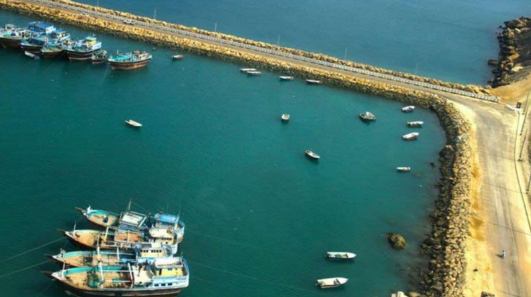In the ever-evolving chessboard of global geopolitics, ports and corridors are not merely conduits of commerce, they are instruments of strategy and sovereignty. For India, the Chabahar Port in Iran and the Kaladan Multi-Modal Transit Transport Project in Myanmar are two such transformative initiatives. Together, they provide alternate arteries of connectivity, enhance India’s strategic autonomy, and reinforce its aspiration of becoming both a continental and maritime power.
Chabahar Port: India’s Western Gateway
Located on Iran’s southeastern coast along the Gulf of Oman, Chabahar Port is India’s most critical western access point. Its foremost importance lies in bypassing Pakistan, allowing India direct access to Afghanistan and Central Asia.
Integrated with the International North-South Transport Corridor (INSTC), Chabahar further links India to Russia and Europe through Iran and the Caspian Sea. This new trade axis drastically reduces transport time and costs compared to the traditional Suez Canal route. In effect, Chabahar and INSTC together create an alternate western route for India’s trade, independent of chokepoints vulnerable to geopolitical instability.
At the same time, Chabahar acts as a counterweight to China’s Gwadar Port in Pakistan, ensuring that Beijing’s strategic footprint in the Arabian Sea is not left uncontested. For India, this is as much about commercial opportunity as about ensuring a balance of power in the wider Indian Ocean.
Kaladan Multi-Modal Project: India’s Eastern Anchor
On the eastern front, the Kaladan Multi-Modal Transit Transport Project creates a vital alternate corridor for India’s trade and connectivity. Linking Kolkata Port to Myanmar’s Sittwe Port by sea, and thereafter integrating inland waterways and road transport to India’s landlocked Northeast, the project reduces dependence on the narrow Siliguri Corridor or ‘Chicken’s Neck.’
This not only enhances security of access to the Northeast but also opens up India to deeper integration with ASEAN under the Act East Policy. Strategically, Kaladan provides an alternate eastern trade route, complementing Chabahar’s role in the West. It also counters China’s growing footprint in Myanmar, where Beijing is pursuing its own infrastructure corridors under the Belt and Road Initiative.
Strategic Synergy: East and West in Balance
When placed side by side, Chabahar (with INSTC) and Kaladan offer India alternate trade and connectivity routes on both its eastern and western flanks.
Westward, Chabahar + INSTC reduces reliance on routes via Pakistan or the long Suez Canal passage, opening faster access to Central Asia, Russia, and Europe.
Eastward, Kaladan provides a lifeline to the Northeast and connects India with Myanmar and ASEAN, bypassing the vulnerable Siliguri Corridor.
Together, these projects create a strategic redundancy in India’s trade architecture, ensuring resilience in case of conflict, blockades, or global disruptions. This dual framework also positions India as a central node in emerging trans-regional supply chains, reinforcing its claim as a ‘Vishwa Mitra’ (friend of the world) and a responsible stakeholder in global connectivity.
Challenges and the Road Ahead
Both projects face hurdles: U.S. sanctions complicating Iran’s engagement, political instability in Myanmar delaying Kaladan, and competing Chinese investments challenging India’s strategic space. Yet the larger picture is clear: these corridors are not optional ventures but essential pathways for India’s economic security and strategic depth.
Conclusion
Chabahar and Kaladan are more than infrastructure: they are India’s twin gateways to resilience, autonomy, and influence. By providing alternate trade routes in both the East and the West, they safeguard India against geopolitical vulnerabilities and unlock new opportunities for engagement across Eurasia and Southeast Asia.
In an era where connectivity is power, India’s investment in Chabahar and Kaladan symbolizes a larger truth: that the nation’s rise will not be confined to the subcontinent, but will stretch from the Gulf of Oman to the Bay of Bengal, and from Central Asia to the Pacific.




